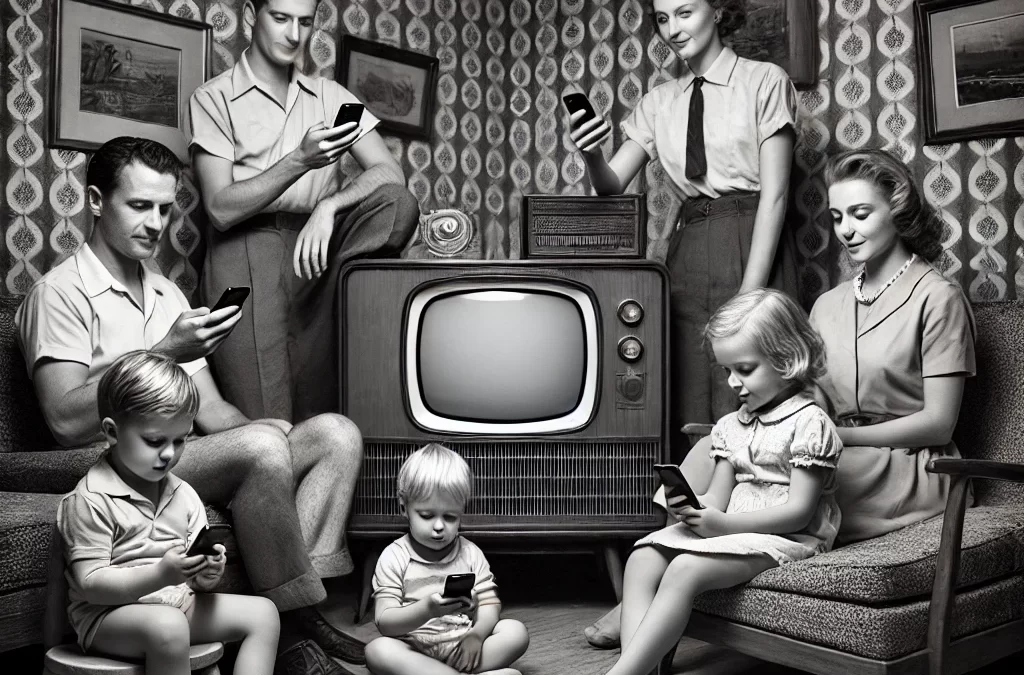How Advertising Works: A Simple Guide
Imagine you’re at a crowded party. There are dozens of conversations, music is playing, phones are buzzing, and someone’s trying to tell you about their recent vacation. How much of that information are you processing?
Probably not much.
This is precisely what your potential customers experience every day as brands vie for their attention.
Welcome to the reality of how advertising works in the modern world.
It’s not the romantic notion of Don Draper crafting the perfect pitch that makes everyone rush to buy a product. Instead, it’s more like trying to be the person at that party who manages to be memorable despite all the chaos.
How does advertising influence purchasing decisions, stripped of all the marketing jargon and fancy theories?
The Memory Bank Theory
Think of your brain as a bank that stores memories of brands. Whenever you see a Coca-Cola sign, scroll past a Nike ad, or hear a McDonald’s jingle, you make a tiny deposit in your memory bank. Most of these deposits are so small you don’t notice them happening. You’re not suddenly convinced to buy anything – you’re just building up mental availability for these brands.
The clever part? When you’re eventually standing in a store, thirsty, and looking at dozens of drink options, your brain withdraws from this memory bank. You’re more likely to grab a Coca-Cola not because their ads convinced you it’s superior but because it’s the brand that comes to mind most readily.
The Myth of the Loyal Customer
We’ve all heard businesses talk about their “loyal customers,” but a truth that might surprise you is true brand loyalty is as rare as a penguin in the Sahara. Most people who buy your brand also buy your competitors’ products. The heaviest buyers of Pepsi also buy Coke. Loyal Ford drivers occasionally buy Toyotas.
Instead of chasing the myth of exclusivity, successful advertising focuses on being mentally available to all category buyers. It’s like maintaining friendships – you don’t need to be someone’s only friend to have a meaningful relationship with them.
The Power of Distinctiveness
Many brands get it wrong by obsessing over differentiation instead of focusing on distinctiveness.
What’s the difference?the
Differentiation is trying to convince people your shampoo is fundamentally better than all other shampoos.
Distinctiveness is making sure people can recognize your shampoo brand instantly through the consistent use of colors, logos, characters, or jingles.
Think of it this way: meerkats have nothing to do with insurance, but in the UK, compare the Market’s meerkat campaign, which has become one of the most distinctive and successful advertising properties. They didn’t win by convincing people their insurance was unique—they won by being memorable and instantly recognizable. In the U.S., Geico and the Liberty Mutual LIMU (emu) are similar examples.
The Growth Game
Growing a brand isn’t about convincing a small group of people to buy more – it’s about convincing more people to buy a little. Successful advertising reaches out to occasional and non-buyers rather than preaching to the converted. It’s like throwing a party – you don’t grow your social circle by spending more time with your best friends but by meeting new people.
The Art of Being Boring
One of the hardest pills for marketers to swallow is that effective advertising often feels dull to those creating it.
While marketing teams crave something new and exciting, consumers barely notice most advertising. That’s why consistency over time is crucial.
Think of it like learning a new language.
You don’t become fluent by learning new words every day – you become fluent by hearing and using the exact basic phrases over and over until they become second nature. The same goes for brand building: consistent, simple messages repeated over time build more muscular memory structures than constantly changing, clever campaigns.
The Long and Short of It
Effective advertising isn’t about choosing between long-term brand building and short-term sales activation—it’s about doing both. Think of it like maintaining your health: You need both regular exercise (brand building) and good daily nutrition (sales activation). Neglect either one, or your overall health suffers.
Brand building is like farming – you plant and nurture seeds over time to create a sustainable harvest.
Sales activation is like hunting – you go out and capture immediate opportunities. The most successful brands do both.
Key Takeaways:
1. Advertising works primarily by building memory structures in consumers’ minds through repeated exposure, not persuasion or rational argument. Success comes from being memorable and mentally available when purchasing situations arise.
2. Brand growth comes from increasing your customer base, not from trying to get existing customers to buy more. Focus on reaching all category buyers rather than just heavy brand users.
3. Consistency and distinctiveness matter more than differentiation and creativity. What matters isn’t being different from other brands but being instantly recognizable through consistent use of brand assets.
Brand-building advertising is a long game and works together with performance marketing. You need both seeds, water, fertilizer and sunlight to grow a garden.
And the most essential ingredient – time.
Connect with Jeff at The Marketing Sage Consultancy. Interested in setting up a call with me? Use my calendly to schedule a time to talk. The call is free, and we can discuss your brand and marketing needs.
If you want to learn more about my new offering, The Trusted Advisor Board, you can click here to learn the details. Feel free to email me at jeffslater@themarketing sage.com or text 919 720 0995. Thanks for your interest in working with The Marketing Sage Consultancy.

Photo by Museums Victoria on Unsplash




